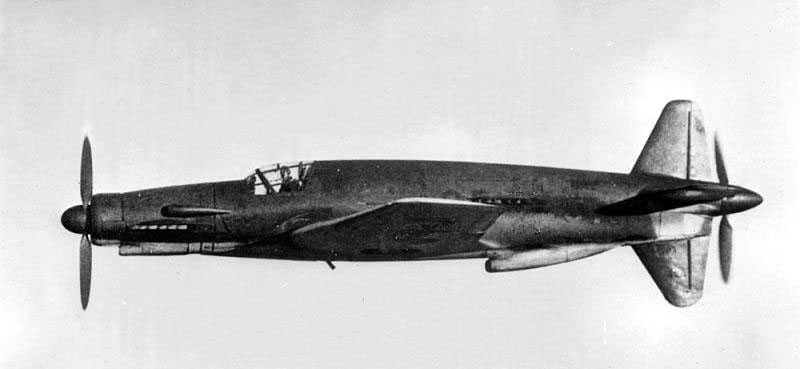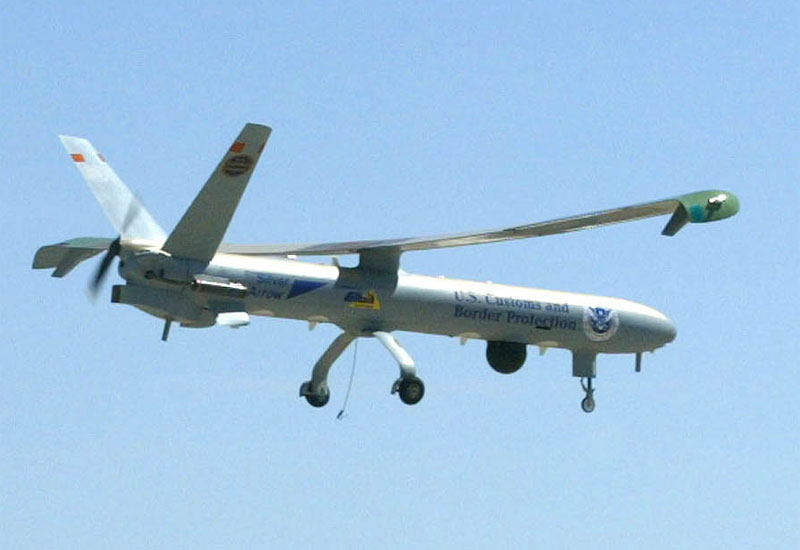One category of aircraft that almost universally uses pusher props is the autogyro. Typically the engine is mounted in the centre of the craft, with the cockpit immediately forward, the rotor above, and the tail somehow mounted behind the prop - which requires an often spindly-looking strut wending its way past the propeller disc.
The same is true of some other types of ultralight aircraft, with a small engine often being strapped directly to the pilot's back, or possibly the back of his seat. In most cases that's the only place it can be mounted without starting to build an actual fuselage.
In both cases, there is some sort of guard which would strike the ground before the propeller itself if sufficient pitch were attained, and the pitch required for this is much greater than most aircraft need at takeoff. A propeller strike is therefore unlikely.
The major advantage of a puller-prop configuration, from an aerodynamic point of view, is that it adds forward airflow over the wings and tail in the most crucial phases of flight, when the aircraft as a whole is going rather slowly. Before the jet era, long tarmac runways were somewhat uncommon, so being able to take off from a short and/or rough field was advantageous. For fighters, the extra few seconds of controllability while manoeuvring in the vertical could easily mean the difference between victory and death.
This was of particular importance for carrier-based aircraft, which during WW2 did not typically have the benefit of a catapult to accelerate them off the deck. The carrier could generate a significant headwind to help out, by steaming upwind as fast as it could, but a heavily loaded fighter or light bomber still needed as much of a safety margin as it could get. The B-25s used in the Doolittle Raid were a truly exceptional case; the crews needed special training in order to take off from something as small as a carrier, and one of them only managed it by floating in the "ground effect" just above the waves after leaving the deck. If they'd been pushers, they probably wouldn't have made it.
Also relevant to carriers is the ordeal of landing on a deck. The universal configuration for any non-VTOL carrier aircraft is a hook, coupled to a heavy-duty shock absorber in the tail, which engages with a series of heavy cables laid across the flight deck. To make that work, the plane basically needs to fly itself into the ship in a nose-up attitude, with none of the flare you'd usually employ when landing on a proper airfield. A rear-mounted propeller would routinely strike the deck in that case, becoming a major hazard to both the aircraft itself and the flight deck crew.
For these and several other reasons, the front-mounted propellor became conventional in military designs and, by extension, in civilian designs as well. A pusher automatically seems unconventional in that context, and is associated with ultralight and otherwise unusual aircraft, such as autogyros.
The shift in CG associated with moving the engine to the back also encourages major changes in planform even with full-sized aircraft, up to and including canard configuration, which makes such an aircraft appear even more outlandish. A canard aircraft also has different handling characteristics at the edge of its flight envelope, which may put prospective pilots off even further. More recently, the three-surface layout (with both canard and conventional tail) has appeared, carrying at least theoretical advantages from both canard and conventional layouts.
Few aircraft designers are willing to stick their neck out into such an environment; that the Beechcraft Starship is widely regarded as a failure - Beechcraft actually destroyed many Starship airframes in an attempt to avoid the costs of supporting them - would tend to encourage further caution. Burt Rutan (of Scaled Composites) is a notable exception to the rule; he has designed several successful canard and three-surface aircraft with pusher engines.
The Piaggio Avanti, however, is a rare example of an aircraft which takes the pusher's inherent advantages to their logical conclusion. With a three-surface layout and very careful attention to aerodynamic details, it is a turboprop aircraft with very close to corporate-jet performance, yet with significantly lower operating costs and the ability to operate from shorter runways than a jet. Being backed by Ferrari, including ferrying the Scuderia racing team around in an Avanti, can't have hurt its popularity. Perhaps more remarkably, the only significant accident I can find involving an Avanti was the loss of an unmanned drone based on the type - not at all bad for an aircraft type that's been flying hundreds of examples for nearly 30 years.
So the pusher configuration has its own advantages, which most aircraft designers don't really know how to make the most of because jets and front-mounted props have been the standard for so long. But the latter became dominant due to decisive advantages it held in the pre-jet era.

 Source: Rolls Royce - The Jet Engine
Source: Rolls Royce - The Jet Engine

 MQ-9 Reaper
MQ-9 Reaper Elbit Hermes
Elbit Hermes
